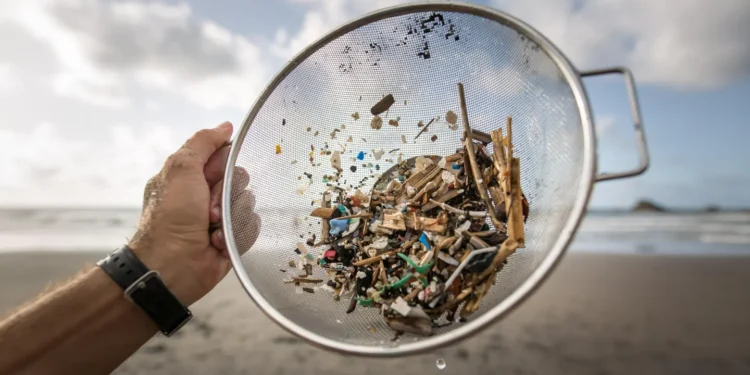Researchers from the University of New Mexico have discovered that human testicles contain microplastics, which they believe might be linked to declining sperm counts in men.
The scientists led by John” Yu, MD, PhD, MPH, a professor in the UNM College of Nursing at the University of New Mexico tested 23 human testicles and 47 testicles from pet dogs.
The human testicles had been chemically preserved, so their sperm count could not be measured.
However, in the dogs’ testes, a lower sperm count was observed in samples with higher contamination of Polyvinyl Chloride (PVC) in the tissue.
PVC is used in industrial, municipal and household plumbing and in many other applications.
It can release a lot of chemicals that interfere with spermatogenesis, and it contains chemicals that cause endocrine disruption.

Microplastics Have Been Found in Human Testicles
Furthermore, the discovery showed that human testicles contain microplastics and nano plastics at levels three times higher than those found in dogs.
In dogs, the average concentration of microplastics in testicular tissue was 122.63 micrograms per gram of tissue (a microgram is a millionth of a gram). In human tissue the average concentration was 329.44 micrograms per gram.
“At the beginning, I doubted whether microplastics could penetrate the reproductive system,” Yu said.
“When I first received the results for dogs I was surprised. I was even more surprised when I received the results for humans.”
Also Read: KEBS to Investigate Uji Power, Okra Amid Sexual Benefits Craze
Yu said heavy metals, pesticides and endocrine-disrupting chemicals have all been implicated in a global decline in sperm count and quality in recent years.
The researchers found the most prevalent polymer in both human and dogs’ tissue was polyethylene (PE), which is used to make plastic bags and bottles.
What is a Microplastic
Microplastic is a piece of plastic less than 5 millimeters in length born from the disposal and breakdown of consumer products like single-use plastic bottles, food packages and plastic pellets, the tiny pieces of plastic used to make packaging, auto parts, toys and other items.
They result when plastic is exposed to ultraviolet radiation in sunlight and degrades in landfills.
It can be blown about by the wind or carried into nearby waterways, and some bits are so small they are measured in nanometers (a billionth of a meter).
They have been detected throughout the human body, including in the saliva, blood liver, kidneys, placenta — and, in the recent studies, the testicles.
Also Read: Study Reveals How Children in Nairobi Estates Are Exposed to Poisonous Gas
They’re now ubiquitous in the environment – even as global use of plastics continues to grow. Yu noted that the average age of the men in the autopsy samples was 35, meaning their plastics exposure began decades ago, when there was less plastic in circulation.
“The impact on the younger generation might be more concerning, now that there is more plastic than ever in the environment, he said.
He added that the findings point the way for additional research to understand how microplastics might affect sperm production in the testes.
“We have a lot of unknowns. We need to really look at what the potential long-term effect. Are microplastics one of the factors contributing to this decline?” Yu added.
Follow our WhatsApp Channel for real-time news updates:
https://whatsapp.com/channel/0029VaB3k54HltYFiQ1f2i2C











































































